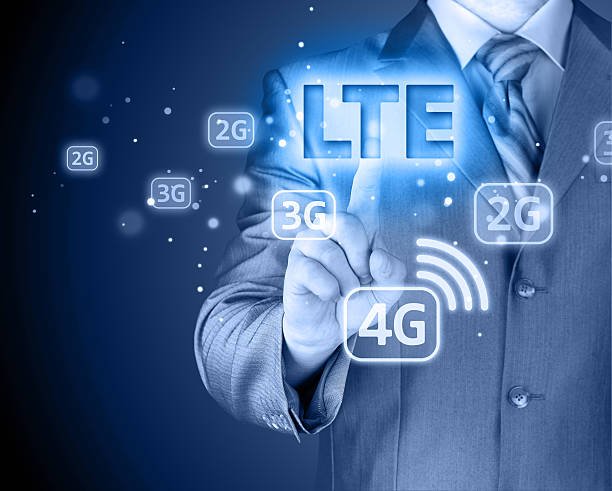With the ever-growing need for faster and more reliable mobile networks, terms like LTE and 4G have become common in conversations about mobile data. While many people use the terms interchangeably, LTE and 4G are not exactly the same thing. So, what are the differences between LTE and 4G? In this article, we’ll dive deep into each technology, compare them across multiple categories, and help you understand which one might be the better option for your needs.
Read More
What is LTE?
Defining LTE Technology
LTE stands for Long Term Evolution. It’s a type of wireless broadband communication technology that was designed to improve upon older mobile network standards like 3G. LTE aims to provide faster speeds and better connectivity for mobile devices like smartphones, tablets, and even laptops.
LTE Evolution and Standards
LTE is often referred to as “4G LTE,” but it technically isn’t true 4G. When LTE was first introduced, it didn’t meet the International Telecommunication Union’s (ITU) standards for 4G. LTE, therefore, is considered a bridge between 3G and true 4G. Over time, LTE networks have improved to meet or exceed 4G standards, a version often referred to as “LTE Advanced.”
The Role of LTE in Modern Mobile Networks
LTE revolutionized mobile communications by significantly improving data speeds and network efficiency. Today, most carriers around the world have adopted LTE to ensure seamless connectivity and faster mobile internet speeds for their customers.

What is 4G?
The Basics of 4G Technology
4G, or the fourth generation of mobile communication standards, was developed to offer higher data speeds and better performance compared to 3G. 4G networks were designed with the future in mind, allowing faster streaming, downloading, and overall connectivity.
How 4G Differs from Previous Generations
The most significant difference between 4G and previous generations like 3G is speed. 4G can theoretically provide speeds of up to 100 Mbps for high-mobility communications (such as cars and trains) and up to 1 Gbps for low-mobility communications (like pedestrians).
The Global Impact of 4G on Mobile Connectivity
The introduction of 4G networks worldwide reshaped mobile usage, making high-definition video streaming, online gaming, and cloud-based services more accessible than ever.

LTE vs 4G: Key Differences Explained
Speed Comparison
Download Speeds
One of the most noticeable differences between LTE and 4G is the speed. Standard LTE typically offers download speeds ranging from 10 to 50 Mbps, while 4G can offer up to 1 Gbps under optimal conditions. However, in day-to-day usage, LTE provides more consistent speeds, making it the preferred option in many regions.
Upload Speeds
Upload speeds are equally important for activities like video calling or uploading large files. LTE generally provides upload speeds around 10 Mbps, while 4G can handle up to 500 Mbps. That said, speeds can vary depending on network congestion and location.
Latency Differences
Real-Time Applications
Latency refers to the time it takes for data to travel from your device to the network and back. Lower latency is better for real-time applications like video calls or online gaming. LTE networks typically offer lower latency than 3G, but 4G networks still offer better overall performance for these types of applications.
Gaming and Streaming Experience
For gamers and streamers, 4G offers a more reliable and faster connection with less buffering and lag. LTE is still a solid option, but for the best gaming experience, 4G tends to outperform.

Network Coverage and Availability
Urban vs Rural Coverage
Both LTE and 4G networks are widely available in urban areas, but rural coverage can vary. In many rural regions, LTE is more commonly available than true 4G, making it the default option in less populated areas.
Carrier Support for LTE and 4G
Most carriers support both LTE and 4G, but the availability of full 4G coverage can depend on the carrier and location. Some carriers may prioritize LTE in specific regions where 4G infrastructure isn’t as developed.
Device Compatibility and Requirements
Device Support for LTE
Most modern smartphones, tablets, and even some laptops are designed to support LTE networks. As LTE is now a standard technology in mobile devices, you won’t have to worry about compatibility unless you are using an older phone.
Device Support for 4G
Devices that are labeled “4G-capable” should support both 4G and LTE. However, older models may only support LTE or a slower version of 4G. Make sure to check the specs of your device to ensure it’s compatible with the latest networks.
Compatibility Challenges with Older Devices
If you’re using an older device, it may only support 3G or early versions of LTE, meaning you won’t be able to fully take advantage of 4G speeds. Upgrading your device might be necessary to experience the full benefits of 4G.
LTE and 4G for Mobile Data Usage
Data Caps and Throttling
Both LTE and 4G can be subject to data caps and throttling by carriers. However, 4G networks tend to handle data more efficiently, reducing the likelihood of throttling during peak usage times.
Streaming, Downloads, and Daily Usage Experience
When it comes to data-heavy tasks like video streaming or downloading large files, 4G provides a smoother experience. That said, LTE is still capable of handling most daily tasks, even though the speeds may be slightly lower.
How LTE and 4G Handle Congestion and Heavy Traffic
During peak times, 4G networks are generally better at managing congestion. LTE may experience slower speeds during heavy traffic, particularly in densely populated areas.
Call Quality and VoLTE
Introduction to VoLTE (Voice over LTE)VoLTE stands for Voice over LTE, a technology that allows users to make voice calls over LTE networks. This results in clearer call quality and faster connection times compared to traditional 3G voice calls.
Call Quality on LTE vs 4G
Call quality on LTE using VoLTE is significantly better than older 3G networks. 4G, however, is designed for even higher-quality voice and video calls, especially in regions with advanced 4G infrastructure.
Support for HD Voice
Both LTE and 4G networks support HD voice, but 4G has an edge in areas with fully developed network infrastructure. HD voice ensures clearer, crisper communication during phone calls.
Battery Life: LTE vs 4G
Impact of LTE on Battery Life
Using LTE can drain your battery faster, especially in areas with weak signals, as your device works harder to maintain a stable connection.
4G’s Power Consumption Patterns
Similarly, 4G tends to consume more power than 3G but less than LTE, particularly when running data-heavy apps like streaming services or GPS.
Best Practices for Battery Management
To extend battery life on both LTE and 4G, you can reduce screen brightness, close background apps, and switch to Wi-Fi when available.
Security And Reliability
Security Features of LTE
LTE offers robust security protocols, including encryption and network authentication, to ensure safe and secure connections.
How 4G Ensures Safe Connections
4G networks enhance these security features, providing stronger protection against threats like hacking or data theft.
Risks and Vulnerabilities
While both LTE and 4G offer advanced security, no network is immune to risks. Always use trusted apps and avoid unsecured public Wi-Fi when possible.
Click photo below to learn more about Cyber security

LTE and 4G in Different Regions
LTE and 4G Availability by Country
Availability of LTE and 4G networks varies by country. Some regions, especially in developed nations, have widespread 4G infrastructure, while others still rely on LTE.
Regional Adoption Rates
Countries in Europe, North America, and parts of Asia lead in 4G adoption, while others may still be expanding their LTE networks.
Differences in Network Speeds Globally
The performance of LTE and 4G can differ globally due to varying levels of infrastructure investment. In some regions, LTE might outperform 4G in terms of speed and coverage.
Costs and Data Plans: LTE vs 4G
Pricing Models for LTE
In many regions, LTE data plans are more affordable than full 4G plans, making LTE a popular choice for budget-conscious users.
4G Data Plans and Affordability
4G plans may come at a premium, but they offer faster speeds and better connectivity, making them ideal for heavy data users or those who need high-speed internet on the go.
Cost Efficiency for Heavy Data Users
For users who rely heavily on data, 4G plans offer better value in terms of speed and performance, but LTE plans remain a strong alternative for most everyday users.
The Future of LTE and 4G
Transition to 5G
The next evolution in mobile networks is 5G, which is designed to offer even faster speeds and lower latency than 4G. However, LTE and 4G will continue to play a crucial role for years to come.
Will LTE and 4G Still Be Relevant?
Even with the advent of 5G, LTE and 4G will remain relevant as fallback networks, especially in areas where 5G is not yet available.
Long-Term Longevity of LTE Networks
LTE is expected to coexist with 5G for the foreseeable future, providing reliable coverage in areas where 5G hasn’t been fully rolled out.
Choosing Between LTE and 4G
Which One is Best for You?
Choosing between LTE and 4G depends on your needs. If you require top-tier speeds and performance, 4G is the better option. For everyday tasks, LTE is often more than sufficient.
Factors to Consider: Location, Usage, Budget
Your location, data needs, and budget will heavily influence your decision. In areas where 4G coverage is strong, it’s worth opting for a 4G plan. Otherwise, LTE is a solid alternative.
How to Optimize Your Mobile Experience
Whether you’re on LTE or 4G, regularly updating your device, monitoring your data usage, and choosing the right data plan will help you get the most out of your mobile experience.
Conclusion: LTE or 4G: Which One Should You Choose?
In the debate between LTE and 4G, there’s no clear-cut winner. While 4G offers faster speeds and better performance, LTE is more widely available and perfectly adequate for most everyday tasks. Your choice ultimately depends on what you prioritize—speed, coverage, or cost.
FAQs
1. What is the main difference between LTE and 4G?
LTE is a transitional technology that doesn’t fully meet the 4G standard, while 4G offers faster speeds and lower latency.
2. Can my 4G phone support LTE networks?
Yes, most 4G phones can connect to LTE networks without any issues.
3. Is LTE faster than 4G?
No, 4G is generally faster than LTE, though the difference may not be noticeable in some regions.
4. Do all carriers offer LTE and 4G services?
Most major carriers offer both LTE and 4G, but the availability can vary by location.
5. Will 5G replace both LTE and 4G?
5G is expected to replace 4G over time, but LTE and 4G will still be used as fallback networks in many areas for years to come.